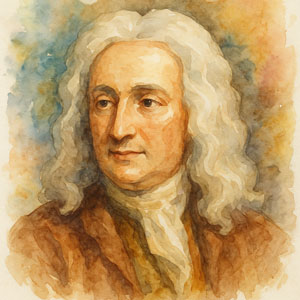 Sir Edmund (also spelled Edmond) Halley (1656–1742), astronomer and mathematician, was born in London, England. He turned his gaze to the heavens and his mind to order — patient, precise, and open to wonder.
Sir Edmund (also spelled Edmond) Halley (1656–1742), astronomer and mathematician, was born in London, England. He turned his gaze to the heavens and his mind to order — patient, precise, and open to wonder.
A close friend to Isaac Newton, Halley encouraged Newton to write the Philosophiæ Naturalis Principia Mathematica and helped bring it into the world. Newton observed, “If I have ever made any valuable discoveries, it has been owing more to patient attention than to any other talent.”
Using Newton’s theory of gravitation, Halley studied historical observations and, in 1705, predicted that the brilliant comet seen in 1607 and 1682 would return in 1758. It did — a triumph of careful thinking and faithful calculation.
Beyond his famous comet, the versatile Halley cataloged southern stars, proved that comets move in elliptical orbits around the sun, and explored barometric pressure, ocean salinity, and rainbows. He studied the moon, mapped winds, and measured the lunar pull on tides — a lifelong conversation with the natural world.
He praised his friend in verse — “Come celebrate with me in song the name of Newton… who unlocked the hidden treasures of truth.” Friendship, patience, and curiosity shaped his days.
 Trust the quiet harmony of the universe. 🌠
Trust the quiet harmony of the universe. 🌠
